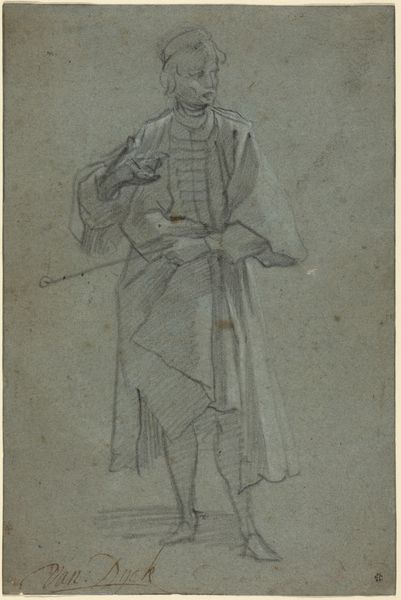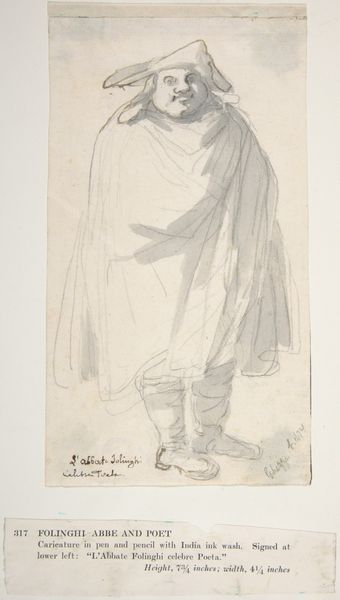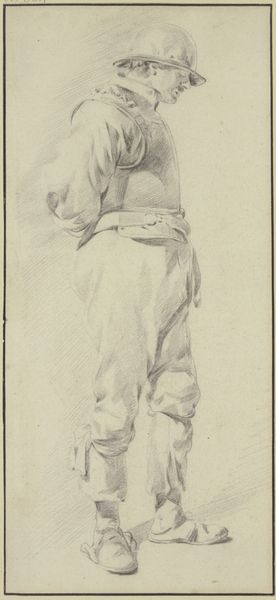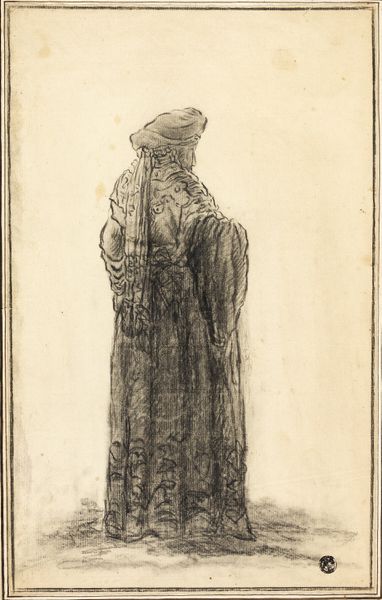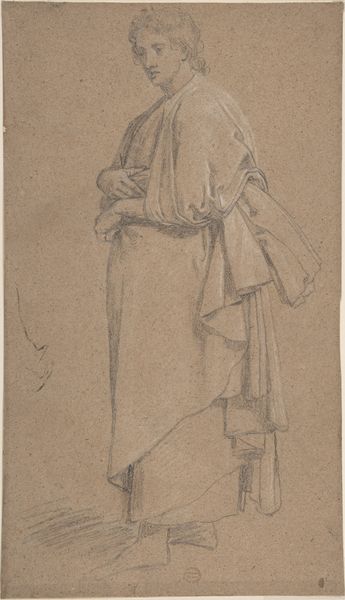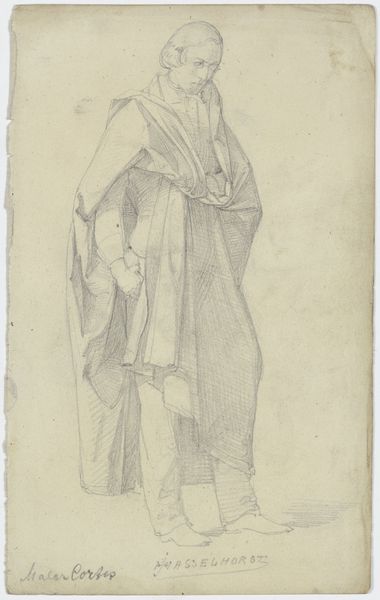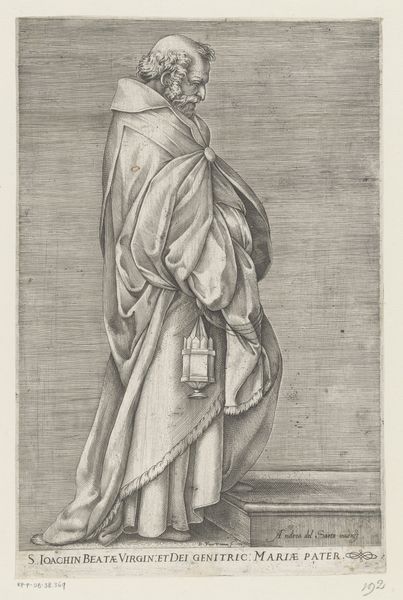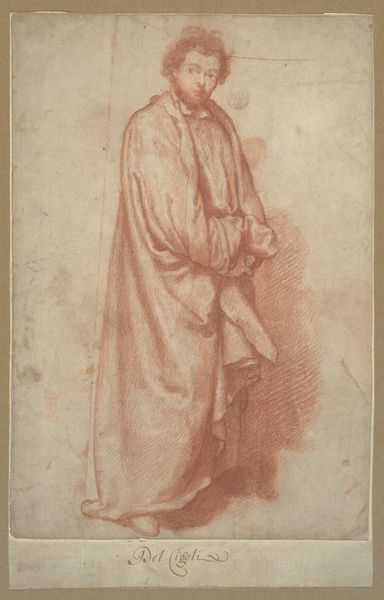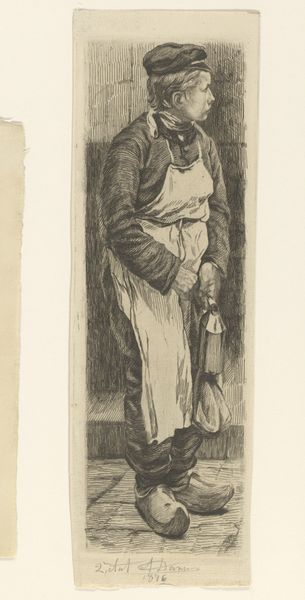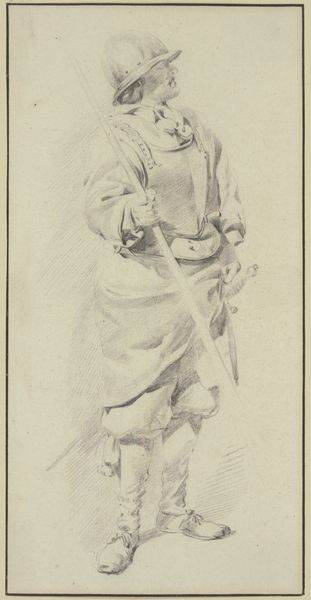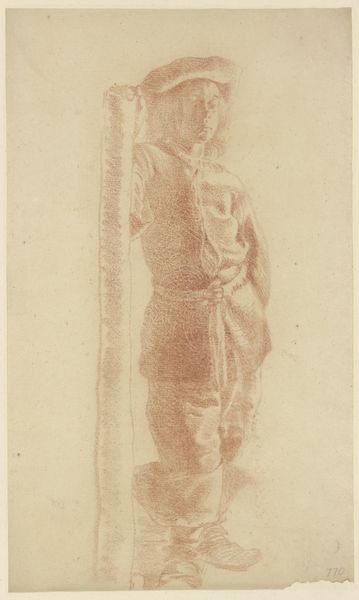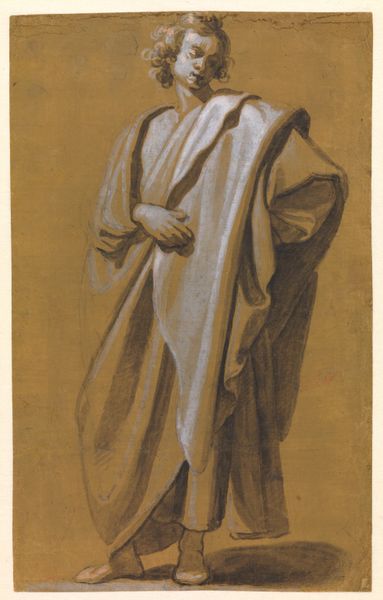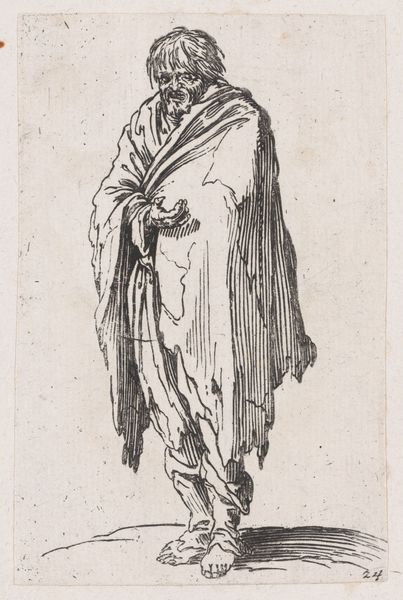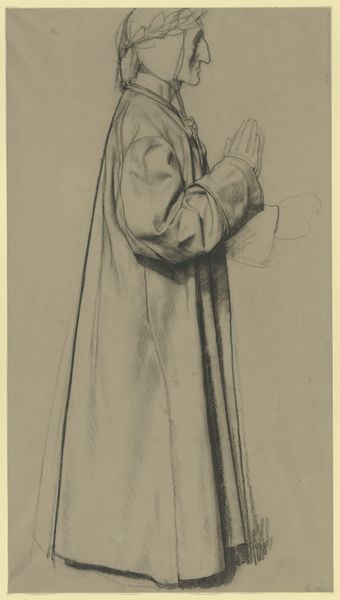
drawing, print, pencil
#
portrait
#
drawing
# print
#
pencil drawing
#
pencil
#
academic-art
#
realism
Dimensions: Sheet: 13 5/16 × 7 9/16 in. (33.8 × 19.2 cm)
Copyright: Public Domain
Curator: This drawing is titled "A Turkish Warrior" by Niels Simonsen, created in 1843. It's rendered in pencil, a print available here at The Metropolitan Museum of Art. The work strikes me with its clear realist aesthetic. Editor: The texture! I'm immediately drawn to the contrasts. The billowing fabric, those bulbous pants – everything hints at a sense of concealed power. Curator: Right, the depiction feels almost documentary. In 1843, increased print media disseminated a greater wealth of realistic depictions of exotic lands. Simonsen is Scandinavian and this fits within a pattern of artists traveling the Mediterranean, North Africa and the Middle East and recording their experiences and encounters. How does this connect to symbolic power you alluded to? Editor: For one, that turban, so meticulously rendered, speaks of status and religious authority, instantly signaling the man's identity. And his gaze – averted, but direct somehow – suggests an internal strength, reflecting qualities associated with leadership in numerous cultural visual traditions.. The figure emanates an assured masculinity. Curator: Yes, masculinity becomes key when looking at orientalist depictions. Consider how this image functions for a Western European audience. The "Turkish Warrior" figure, historically an antagonist of sorts in Europe, presented through realism, gains legitimacy in art spaces. But the pencil medium signals sketch, or prep work, perhaps a way to distance the drawing from ‘high art’ with all the politics and class attached at the time. Editor: Interesting, as the drawing’s texture further intrigues me. The subtle gradations, especially around the face, give him a three-dimensionality. Curator: True, these orientalist figures gained increasing popularity in 19th century art world, reflecting and feeding into Europe's colonial ambitions, sometimes through fetishized depictions, with this image showing a subdued presentation by comparison. Editor: It’s true; one might see this not just as an image of a warrior, but as a statement on cultural differences, strength, and maybe a veiled sense of otherness – ideas that have stuck with the symbol. This image may have changed how individuals in Europe understand what the Orient and "Turks" even mean, which may still affect us today. Curator: Examining the work's public role during its time exposes not only how it might reflect biases, but its power to shape our continued understanding and reception today. Editor: I'll walk away thinking more about that subtle face as an invitation to question assumptions.
Comments
No comments
Be the first to comment and join the conversation on the ultimate creative platform.
